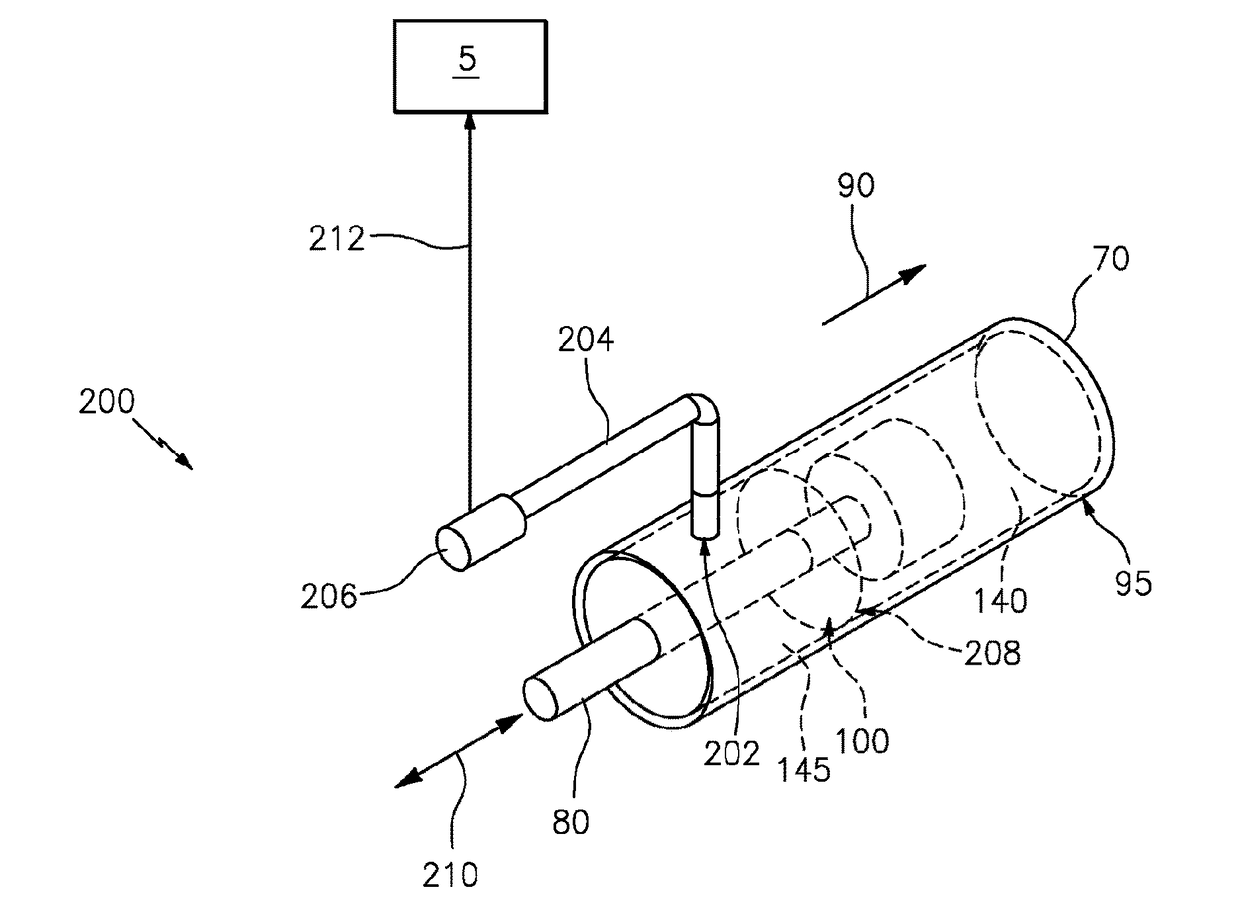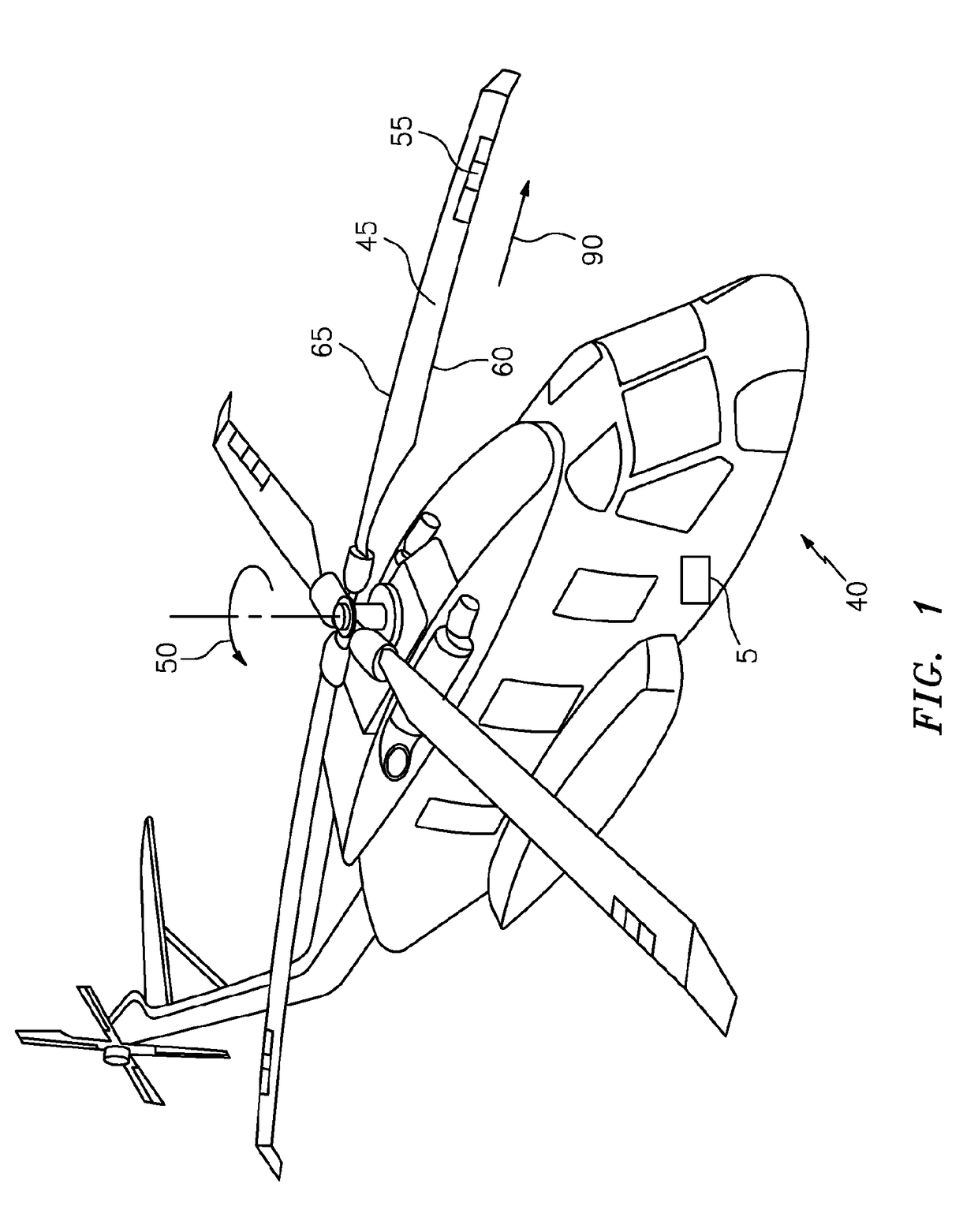Lubricant level sensing for an actuator
a technology of actuator and lubricant, which is applied in the direction of liquid/fluent solid measurement, instruments, transportation and packaging, etc., can solve the problems of electromechanical actuator subject to substantial changes in orientation, velocity, acceleration, vibration, and damage, and reduce performance or damage.
- Summary
- Abstract
- Description
- Claims
- Application Information
AI Technical Summary
Benefits of technology
Problems solved by technology
Method used
Image
Examples
Embodiment Construction
[0022]It is noted that various connections are set forth between elements in the following description and in the drawings (the contents of which are included in this disclosure by way of reference). It is noted that these connections in general and, unless specified otherwise, may be direct or indirect and that this specification is not intended to be limiting in this respect. In this respect, a coupling between entities may refer to either a direct or an indirect connection.
[0023]Referring to FIG. 1, a helicopter 40 is depicted having one or more rotor blades 45 configured for rotation in a rotor direction 50. Each rotor blade 45 has one or more control surfaces 55 (three shown) disposed thereon. The helicopter 40 represents one example of a system that can incorporate one or more instances of a lubricant level sensing system for an actuator as further described herein. By way of example, while shown in the context of a conventional helicopter 40, it is understood that aspects cou...
PUM
 Login to View More
Login to View More Abstract
Description
Claims
Application Information
 Login to View More
Login to View More - R&D
- Intellectual Property
- Life Sciences
- Materials
- Tech Scout
- Unparalleled Data Quality
- Higher Quality Content
- 60% Fewer Hallucinations
Browse by: Latest US Patents, China's latest patents, Technical Efficacy Thesaurus, Application Domain, Technology Topic, Popular Technical Reports.
© 2025 PatSnap. All rights reserved.Legal|Privacy policy|Modern Slavery Act Transparency Statement|Sitemap|About US| Contact US: help@patsnap.com



